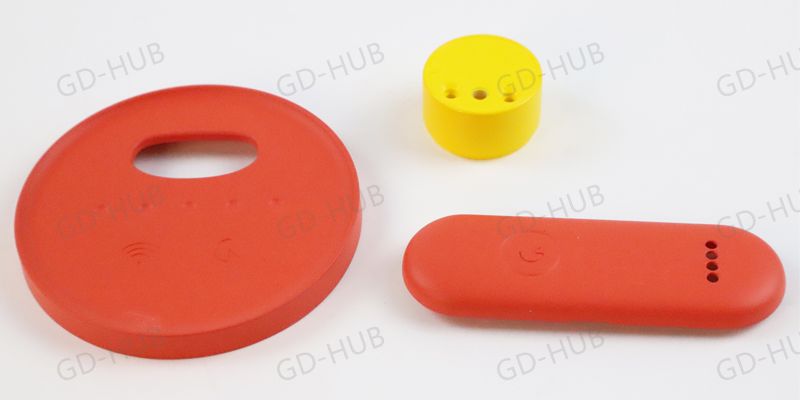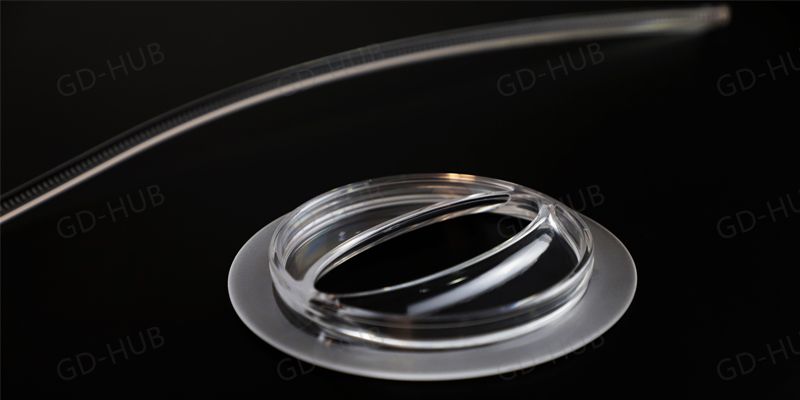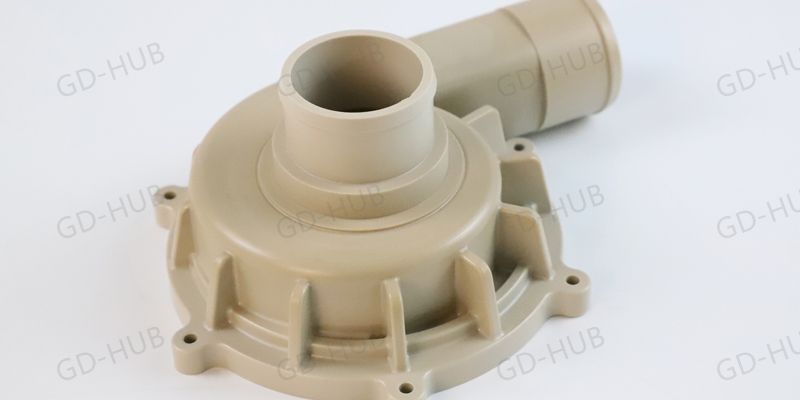—— Surface finishing process for plastics
Surface finishing processes for plastics are essential techniques used to enhance the visual appeal, durability, and functionality of plastic components. These processes can be categorized into several methods, each offering unique benefits.
Painting and Coating:

Spray Painting: A versatile method that involves applying a layer of paint or coating using a spray gun. It allows for a wide range of colors and finishes.
Dip Coating: Parts are immersed in a liquid coating material, and the excess is allowed to drip off, leaving a uniform coating when dried.
Powder Coating: Powdered coating material is electrostatically applied to the surface, then baked to create a durable, smooth finish.
Electroplating: A metal layer is deposited onto the plastic surface using an electrochemical process, providing a metallic appearance and enhanced conductivity.
Decorative Films and Foils:
In-Mold Decorating (IMD): A film with a decorative pattern or design is placed into the mold before injection molding, resulting in a permanent, scratch-resistant finish.
Hydrographics/Water Transfer Printing: A film with a desired pattern is floated on water, and the part is dipped through the film, transferring the pattern onto the plastic.
Texturing:
Mold Texturing: The mold cavity is textured to create various surface finishes, such as matte, gloss, or specific patterns.
Laser Etching: High-precision laser beams are used to engrave or mark the plastic surface, adding texture or custom designs.
Thermal Processes:
Hot Stamping: A heated die is used to transfer a foil or pigment onto the plastic surface, creating a decorative and durable finish.
Heat Sealing: Heat is applied to thermoplastic films or sheets, bonding them to the plastic surface for branding or sealing purposes.
Chemical Processes:
Chemical Etching: Chemicals are applied to selectively remove material from the surface, creating a textured or patterned finish.
Plasma Treatment: Plasma is used to modify the surface properties of plastics, improving adhesion for subsequent processes like printing or bonding.
Abrasive Processes:

Sanding and Polishing: Mechanical abrasion is used to smoothen rough surfaces, remove imperfections, and achieve a glossy finish.
Blasting: Abrasive particles are propelled onto the plastic surface to create a textured or matte finish.
Additive Methods:
3D Printing with Surface Finish: Some 3D printing technologies, like Multi Jet Fusion, can produce parts with built-in textures or colors.
Adhesive Bonding:

Gluing or Bonding: Adhesive materials are used to join plastic components, providing a seamless and strong connection.
The choice of surface finishing process depends on the specific requirements of the plastic part, including its intended use, aesthetics, and functional characteristics. GD-HUB often select a combination of these methods to achieve the desired results, taking into account factors such as cost, production volume, and material compatibility.
—— Role of these surface finishing
Surface finishing processes for plastics play a crucial role in enhancing the appearance, functionality, and performance of plastic parts and products.
l Aesthetics and Visual Appeal:
Painting and Coating: These processes allow for customization of colors and textures, making plastic components more visually appealing and aligned with brand or design requirements.
Decorative Films and Foils: They provide intricate patterns, designs, and graphics, adding decorative elements to products.
Texturing: Mold texturing and laser etching create visually interesting surface patterns and textures.
Hot Stamping and Heat Sealing: These processes can apply metallic or holographic finishes for a premium look.
l Protection and Durability:
Painting and Coating: They offer protection against wear, abrasion, UV radiation, and environmental factors, extending the lifespan of plastic parts.
Powder Coating and Electroplating: These processes provide corrosion resistance and enhance the durability of plastic components.
Thermal Processes: Hot stamping and heat sealing can provide scratch-resistant and tamper-evident features.
l Functional Improvements:
Chemical Etching: It can be used to create microstructures for improved friction, adhesion, or lubrication properties.
Plasma Treatment: Enhances adhesion for printing, bonding, or painting processes.
Texturing: Surface textures can improve grip, reduce glare, or serve specific functional purposes.
l Branding and Identification:
Hot Stamping: Used for adding logos, branding, and serial numbers to plastic components.
Heat Sealing: Commonly employed for sealing and labeling packaging materials.
Electrical and Thermal Properties:
Electroplating: Can improve electrical conductivity for EMI/RFI shielding or electrical components.
Thermal Processes: Can add heat-resistant coatings for applications where elevated temperatures are encountered.
l Corrosion Resistance:
Coatings and Plating: Protect against chemical exposure and environmental factors that may lead to corrosion.
l Adhesion and Bonding:
Plasma Treatment: Improves adhesion between plastic components and adhesives or other materials.
Heat Sealing: Bonds plastic films or sheets together for packaging or sealing applications.
l Customization and Personalization:
3D Printing with Surface Finish: Allows for the creation of unique, customized plastic parts with integrated textures and colors.
l Consistency and Quality Control:
Surface finishing processes help maintain consistent quality and appearance across a batch of plastic components.
Surface finishing plays a pivotal role in transforming basic plastic components into functional, attractive, and high-quality products suitable for various industries, including automotive, consumer electronics, aerospace, healthcare, and packaging.
①.Plastic materials used for injection molding:
1. Polyethylene (PE):
HDPE (High-Density Polyethylene): Known for its strength, chemical resistance, and suitability for containers, pipes, and industrial parts.
LDPE (Low-Density Polyethylene): Flexible and used for items like plastic bags and squeeze bottles.
2. Polypropylene (PP):
Offers good chemical resistance, rigidity, and a low melting point, making it suitable for a wide range of applications, including packaging, automotive parts, and consumer products.
3. Polyvinyl Chloride (PVC):
Available in rigid (RPVC) and flexible (FPVC) forms.
Rigid PVC is used for pipes, fittings, and construction materials.
Flexible PVC is used for cable insulation, medical tubing, and inflatable products.
4. Polystyrene (PS):
HIPS (High-Impact Polystyrene): Known for its impact resistance and often used for packaging and consumer goods.
GPPS (General-Purpose Polystyrene): Provides clarity and is used for items like CD cases and disposable cutlery.
5. Polyethylene Terephthalate (PET):
Known for its clarity, toughness, and resistance to moisture.
Commonly used for beverage bottles, food containers, and synthetic fibers.
6. Polycarbonate (PC):
Offers high impact resistance, transparency, and temperature resistance.
Used in applications such as eyewear lenses, automotive components, and electronic housings.
7. Acrylonitrile Butadiene Styrene (ABS):
Combines good strength with impact resistance and is known for its ease of processing.
Used for automotive parts, consumer electronics, and toys.
8. Polyurethane (PU):
Offers flexibility, abrasion resistance, and durability.
Used for applications like shoe soles, automotive bumpers, and seals.
9. Polyamide (Nylon):
Various types of nylon (e.g., Nylon 6, Nylon 66) are used in injection molding.
Known for their strength, toughness, and resistance to wear.
Used for gears, bearings, and automotive components.
10. Polyoxymethylene (POM):
Known as acetal or Delrin, it offers excellent dimensional stability and low friction.
Used for precision parts like gears, bushings, and connectors.
11. Thermoplastic Elastomers (TPEs):
These include materials like TPU (Thermoplastic Polyurethane) and TPE (Thermoplastic Elastomer).
Known for their flexibility and resilience.
Used for seals, gaskets, and soft-touch grips.
12. Polymethyl Methacrylate (PMMA):
Offers optical clarity and weather resistance.
Commonly used for transparent parts like lenses, displays, and signage.
13. Polyethylene (PEEK):
Known for its high-temperature resistance and mechanical strength.
Used in demanding applications such as aerospace, medical implants, and automotive.
14. Liquid Silicone Rubber (LSR):
A flexible and heat-resistant material commonly used in medical devices, baby products, and gaskets.
②.The plastic materials used for extrusion molding:
1. Polyethylene (PE):
HDPE (High-Density Polyethylene): Known for its strength, chemical resistance, and durability. Used for pipes, bottles, and various containers.
LDPE (Low-Density Polyethylene): Offers flexibility and is used for plastic bags, films, and squeeze bottles.
2. Polypropylene (PP):
Suitable for a wide range of applications, including packaging, automotive parts, and consumer products, due to its good chemical resistance and low melting point.
3. Polyvinyl Chloride (PVC):
Available in rigid (RPVC) and flexible (FPVC) forms.
Rigid PVC is used for pipes, profiles, and construction materials.
Flexible PVC is used for cable insulation, medical tubing, and flexible profiles.
4. Polystyrene (PS):
HIPS (High-Impact Polystyrene): Offers impact resistance and is used for packaging, consumer goods, and electronic housings.
GPPS (General-Purpose Polystyrene): Provides clarity and is used for items like food containers and disposable cutlery.
5. Polyethylene Terephthalate (PET):
Known for its clarity, toughness, and resistance to moisture.
Used for bottles, food containers, and packaging films.
6. Polycarbonate (PC):
Offers high impact resistance, transparency, and temperature resistance.
Used in applications such as sheets for glazing, lighting, and machine guards.
7. Acrylonitrile Butadiene Styrene (ABS):
Combines strength with impact resistance and is known for its ease of processing.
Used for profiles, tubing, and automotive parts.
8. Polyamide (Nylon):
Various types of nylon (e.g., Nylon 6, Nylon 66) are used in extrusion molding.
Known for their strength, toughness, and resistance to wear.
Used for profiles, tubing, and monofilaments.
9. Polyoxymethylene (POM):
Also known as acetal or Delrin, it offers excellent dimensional stability and low friction.
Used for extruded profiles, rods, and sheets.
10. Polymethyl Methacrylate (PMMA):
Offers optical clarity and weather resistance.
Used for extruded sheets and profiles in applications like signage and displays.
11. Thermoplastic Elastomers (TPEs):
These include materials like TPU (Thermoplastic Polyurethane) and TPE (Thermoplastic Elastomer).
Known for their flexibility and resilience.
Used for extruded profiles, seals, gaskets, and soft-touch grips.
12. Polyvinylidene Fluoride (PVDF):
Known for its chemical resistance and high-temperature stability.
Used in extruded pipes, tubing, and sheets for chemical processing and electrical insulation.
13. Polyethylene-terephthalate glycol (PETG):
Combines the clarity of PET with the ease of processing.
Used for extruded sheets, profiles, and display materials.
14. Polyurethane (PUR):
Offers flexibility and abrasion resistance.
Used for extruded profiles, tubing, and seals in applications like automotive and industrial machinery.
③.The plastic materials used in vacuum casting:
1. Polyurethane (PU):
PU Resin: A versatile material available in various formulations, including rigid, flexible, and elastomeric types. PU resins can mimic the properties of a wide range of engineering plastics, making them suitable for diverse applications.
Rigid PU: Used for parts that require stiffness and durability, such as housings and enclosures.
Flexible PU: Known for its elasticity and used for soft-touch and rubber-like parts.
Elastomeric PU: Offers excellent resilience and is used for gaskets, seals, and components requiring high impact resistance.
2. Epoxy Resin:
Epoxy resins are known for their excellent dimensional stability, high temperature resistance, and chemical resistance. They are used for producing durable and high-quality prototypes or end-use parts.
3. Silicone Rubber:
While not a plastic material, silicone rubber is often used for creating molds in vacuum casting due to its flexibility, ease of demolding, and ability to capture intricate details.
Silicone molds can be used to cast a variety of plastic materials to replicate the desired parts.
4. Acrylic (PMMA):
Transparent and rigid, acrylic can be used for creating clear or translucent parts, such as lenses, display covers, or light guides.
5. Polycarbonate (PC):
Known for its high impact resistance and optical clarity, PC can be used for producing transparent or impact-resistant parts.
6. ABS-Like Resins:
Certain PU or epoxy resins are formulated to mimic the properties of ABS (Acrylonitrile Butadiene Styrene) plastics, making them suitable for prototypes and low-volume production runs where ABS-like properties are needed.
7. Nylon-Like Resins:
Some PU or epoxy resins can emulate the properties of nylon, offering excellent mechanical strength and wear resistance. These resins are used for producing functional prototypes and parts.
8. Polyethylene (PE) and Polypropylene (PP) Mimics:
Specific resin formulations are designed to replicate the properties of PE and PP plastics, which are commonly used in packaging and consumer product applications.
④.The plastic materials used in 3d printing:
1. Polylactic Acid (PLA):
PLA is one of the most popular 3D printing materials due to its ease of use and biodegradability.
It is known for its low toxicity, wide color range, and ability to produce detailed and rigid prints.
PLA is commonly used for prototypes, hobbyist projects, and educational applications.
2. Acrylonitrile Butadiene Styrene (ABS):
ABS is a durable and impact-resistant material with good thermal stability.
It is suitable for functional parts, automotive components, and consumer products.
ABS requires a heated print bed and an enclosed 3D printer to minimize warping.
3. Polycarbonate (PC):
PC offers excellent impact resistance, high-temperature resistance, and transparency.
It is used for parts that require strength and durability, such as automotive components, electronics, and aerospace applications.
4. Nylon (Polyamide):
Nylon is known for its strength, toughness, and flexibility.
It is used for functional prototypes, gears, bearings, and parts requiring high wear resistance.
Various types of nylon, including Nylon 6 and Nylon 12, are used in 3D printing.
5. Polyethylene Terephthalate Glycol-Modified (PETG):
PETG combines the ease of printing with the durability of materials like ABS.
It is used for a wide range of applications, including functional parts, containers, and consumer products.
6. Tough and Flexible Resins:
Resins like TPU (Thermoplastic Polyurethane) and TPE (Thermoplastic Elastomer) are used for flexible and rubber-like parts.
They are suitable for products like gaskets, footwear, and prosthetics.
7. Polyvinyl Alcohol (PVA):
PVA is used as a support material in dual-extrusion 3D printing to create complex, overhanging structures.
It dissolves in water, making it easy to remove after printing.
8. High-Performance Materials:
Some 3D printers can use high-performance materials like PEEK (Polyether Ether Ketone), ULTEM (Polyetherimide), and PEKK (Polyetherketoneketone) for applications requiring extreme temperature resistance and chemical resistance.
9. Biodegradable and Eco-Friendly Materials:
PLA and other biodegradable plastics are often used for environmentally conscious projects and products.
10. Metal-Polymer Composites:
These materials combine plastics with metal particles or fibers, offering enhanced mechanical properties.
They are used for creating metal-like parts with 3D printing.
11. Carbon Fiber-Reinforced Polymers:
Carbon fiber-infused plastics provide increased strength and stiffness for lightweight, high-performance parts.
12. Wood Filaments:
Composites of PLA and wood fibers are used to achieve a wood-like appearance in 3D prints.
13. Specialty Filaments:
Various specialty filaments are available, such as glow-in-the-dark, color-changing, and conductive filaments, for specific applications and creative projects.
Get Surface Finishing Solution For Your Plastics Project